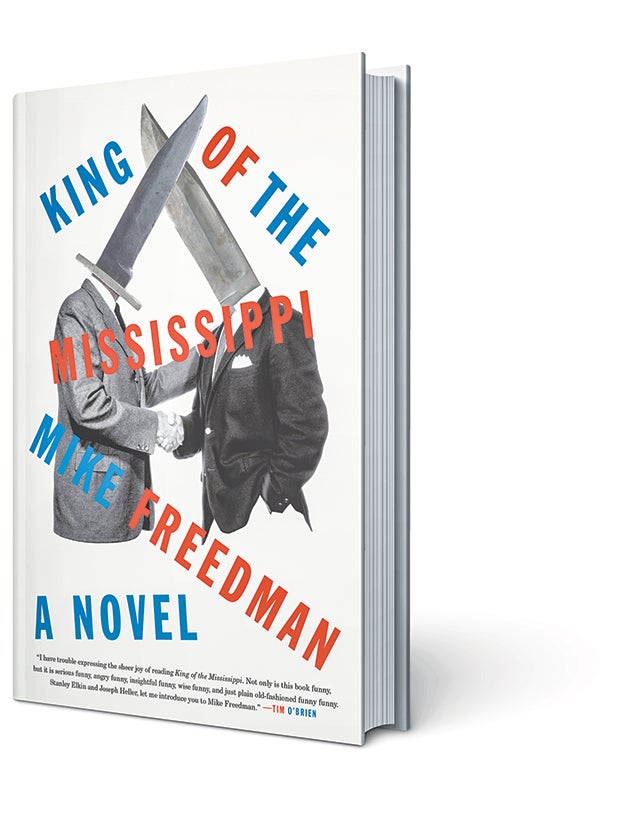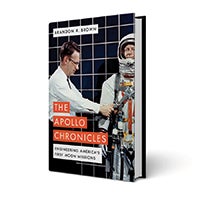Alumni Books
Fall 2019
By Jennifer Latson

King of the Mississippi
Mike Freedman ’14
Hogarth, 2019
In “King of the Mississippi,” Mike Freedman skewers the corporate culture of a fictional Houston management consultancy where two very different alpha male archetypes square off for supremacy — in the firm, in the city and in the realm of manhood generally. Brock Wharton is a pedigreed 1-percenter in Houston’s good-old-boy hierarchy: a former Longhorn football captain with an MBA from Harvard Business School. Mike Fink, meanwhile, hails from “the land of the lower class,” as Wharton describes it: a former Green Beret who creates his own advantages out of an endless reserve of audacity and wile. Their lives intersect in this darkly satirical buddy comedy of sorts as they vie to sabotage each other at every turn, but ultimately must work together on a common cause.
Like Fink, Freedman served in the Special Forces in Iraq and Afghanistan before returning to Houston to earn his MBA at the Jones Graduate School of Business, and a veteran’s perspective suffuses the book. The author’s experiences also inspired the setting: Freedman chose the world of management consulting as the novel’s backdrop after a real-life job interview at a prestigious consultancy went nearly as disastrously as Fink’s interview with Wharton. (Or maybe even more so — Fink got the job, Freedman didn’t.)
“The first chapter is the only autobiographical chapter in the book,” Freedman joked with friends at a Houston party for the book in July. “Though I bombed my consulting interview far worse in real life.”
As an exploration of over-the-top machismo, the book strikes a timely chord. Freedman’s debut novel, “School Board,” also set in Houston, pits an ambitious high schooler against an executive at an Enron-like company for a spot on the local school board — and there, too, machismo plays a key role in the central power struggle. But the conversation about toxic masculinity has only grown more relevant since then, especially as it relates to some of the nation’s highest leadership positions. Fink and Wharton’s rivalry casts a comic light on the futility, and the ridiculousness, of competitive manliness.
Excerpt: “King of the Mississippi”
The shine and swagger of a new day. Great Recession? Not Houston. And yet, and yet there had been a speed bump in September 2008, sure, but that had been assessed and corrected; and now the city of Brock Wharton seceded further from the rest of the flatlined country in the first week of September 2014. As Wharton was considering whether to rearrange his weekend schedule to pencil in sex with his wife, one of the strangest men he had ever laid eyes on breached the space of his open doorway. Of average height, the boyish, sun-cooked man appeared taller than he was as his askew brown hair lashed out in every direction. His rangy build (accentuated by the too-small, off-the-rack, navy double-breasted suit he wore as if he were a redneck admiral at a regatta that Wharton would never enter) seemed pulled at the sinews’ seams. It was the sort of flawed build that none of the South Texas ranching families would ever breed. If not for the intensity of the blue eyes — divided by a comic eagle nose that dived toward raggedly chapped lips — so nakedly sizing him up in return, Wharton would have dismissed the figure as an apparition too absurd to be real.

The Evolution of a Building Complex: Louis I. Kahn’s Salk Institute for Biological Studies
Jeffry Kieffer ’77
Artifice, 2019
Since his college days, Jeffry Kieffer has been fascinated with Louis Kahn’s work on the Salk Institute — the La Jolla, California, complex where Jonas Salk founded one of the nation’s most prestigious biomedical research facilities. It’s taken him four decades to be able to articulate exactly why. “We can never explain our fascination for anything or anyone; we can only adequately or inadequately describe the aspects of things or persons,” Kieffer writes in the preface to “The Evolution of a Building Complex.” “It has taken almost a lifetime for me to appreciate Kahn’s achievement.”
While attending Rice’s graduate program in urban design in the 1970s, however, Kieffer was helped along by an epiphany: It occurred to him that the floor plan of the Salk Institute’s laboratory building looked just like the image of the Torah. Kieffer spent several years researching and writing about the Judaic undercurrents of Kahn’s work before working for more than 30 years himself as an architect and project director in New York City, primarily on municipal projects, including schools, libraries, subway stations and community centers.
In his book, Kieffer focuses on aesthetics and considers the ways Kahn broke from previously established architectural norms — making him, and the Salk Institute, one of the most radical figures in design during the 1960s. — J.L.

The Apollo Chronicles: Engineering America’s First Moon Missions
Brandon R. Brown ’92
Oxford University Press, 2019
John F. Kennedy and Neil Armstrong tend to get the bulk of the lunar spotlight in most coverage of the Apollo program. But while both overcame tremendous hurdles to help make the manned moon landing a success, those hurdles pale in comparison to the extreme technical challenges NASA’s engineers faced. In “The Apollo Chronicles,” Brandon R. Brown focuses instead on five engineers who were instrumental in making the mission work — including some who’ve never been interviewed before.
Brown, a physics professor at the University of San Francisco, also happens to be the son of an Apollo engineer. And although the men who wore the spacesuits enjoy more of the glamour and the glory, the people who got them safely to the moon and back were heroes in their own right, as Brown’s narrative illustrates.
“While I now appreciate just how brave our astronauts were, to sit on towers of explosive fuel and venture into a deadly realm, this book is more concerned with the astronauts’ protectors,” he writes. “I focus on the Earth-bound: the welders of space-worthy seams, the designers of heat shields, the stitchers of spacesuits, and those who computed razor-thin trajectories through space, with disaster awaiting any deviation or missed step.”
America was, after all, the underdog in the space race against the Soviets, which is why our achievement in landing a man on the moon is all the more stunning. Brown’s account of the engineering feats involved in building the world’s most powerful rockets — coupled with the intricacies of keeping humans alive on the journey — makes it clear that these were no small steps at all.

Phenomenology in France: A Philosophical and Theological Introduction
Steven DeLay ’13
Routledge, 2019
Phenomenology isn’t an easy field for nonphilosophers to get a handle on. Even phenomenologists disagree on what exactly the discipline entails, although it’s generally described as the philosophical study of consciousness and the human experience. Theology touches on these same themes, of course — and in “Phenomenology in France,” Steven DeLay examines the ways phenomenology blurs the boundaries between philosophy and theology.
“It is no secret that God — the one of the Bible, I mean — has fallen into disfavor nearly everywhere,” writes DeLay, who earned his doctorate in philosophy from the University of Oxford. “Must, then, phenomenology today continue on the presupposition that it can proceed wholly independent from faith? Can it?”
The book is not only a primer for newcomers to French phenomenology, but also a glimpse at how the field is evolving, according to Claudio Tarditi, a philosophy postdoc at the University of Turin. “It develops a fundamental argument about the fruitfulness of a radical reassessment of the relation between philosophy and theology for the phenomenological reflection that is still to come,” Tarditi writes.
